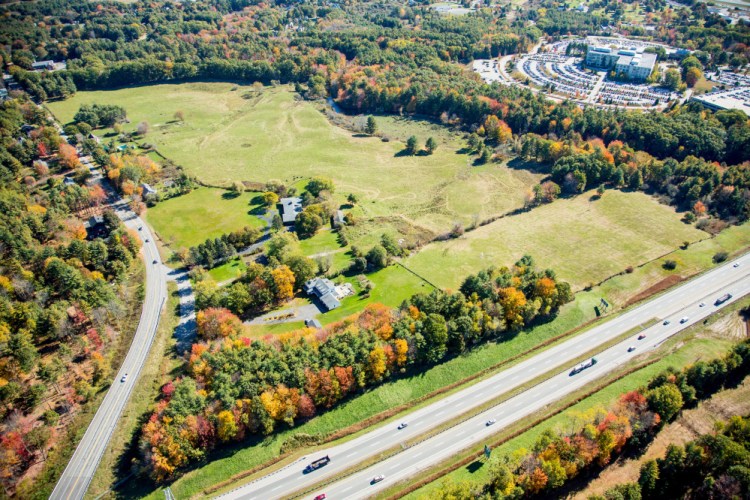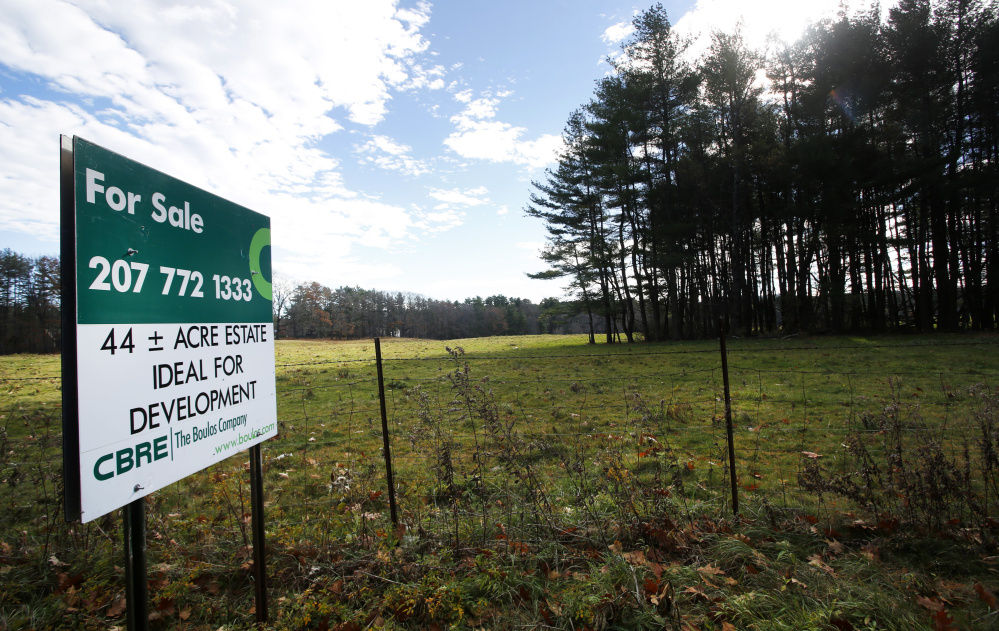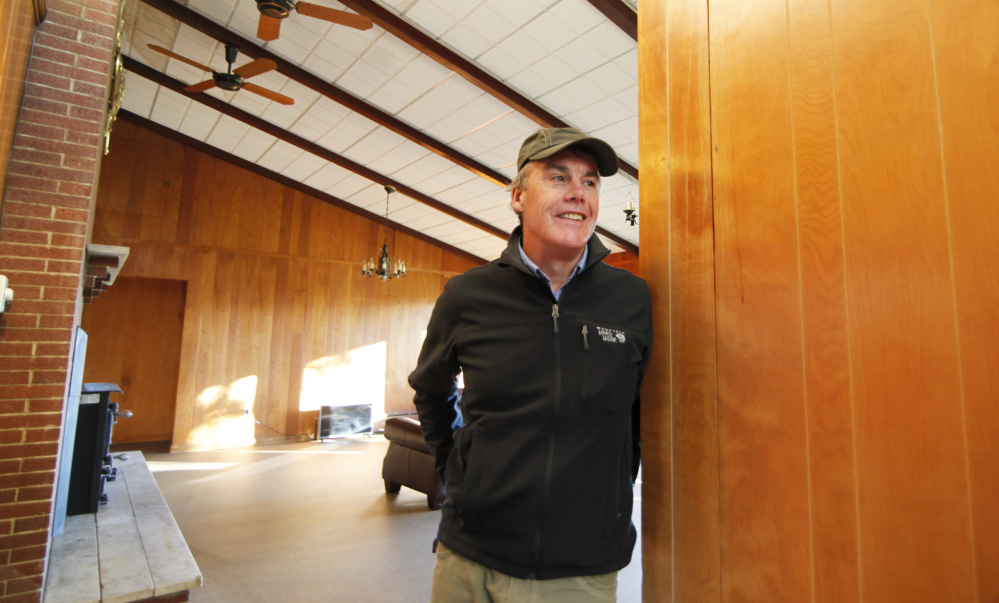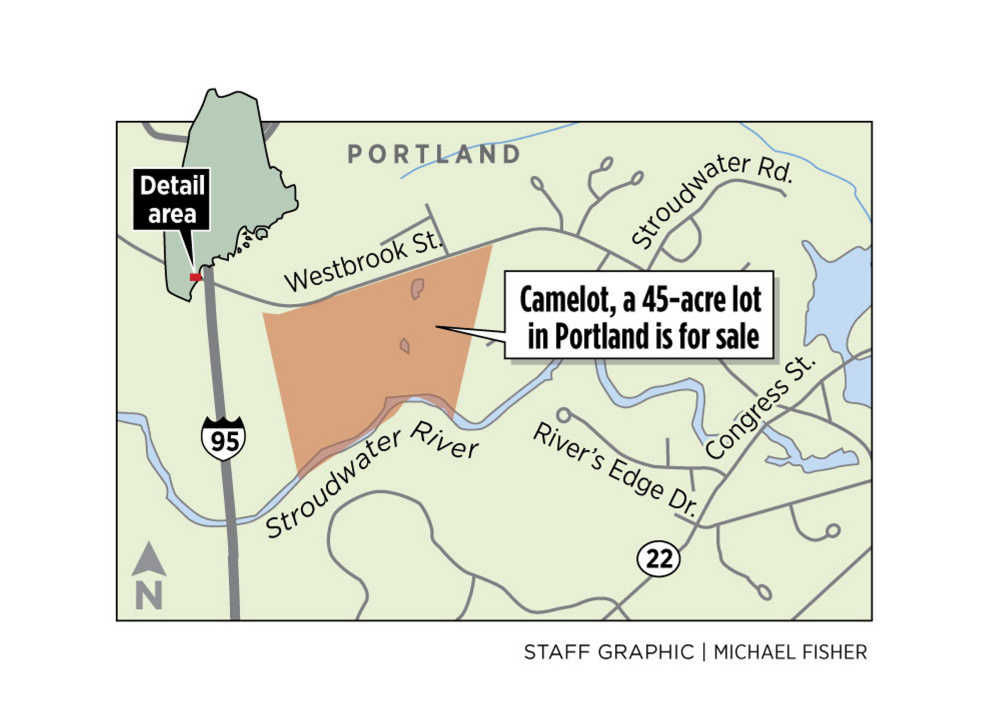The largest residential lot in Portland – a 45-acre former farm just 4 miles from the city’s center – is for sale for the first time in a half-century.
And while some family members would like to see the “Camelot Farm” preserved, the real estate firm marketing the Stroudwater Village property is touting the land as an “ideal” location for development in a city with limited options for larger residential subdivisions.
“It’s a large lot in a beautiful part of the city, so I imagine there will be a lot of interest,” said Jeff Levine, director of Portland’s Planning and Urban Development Department.
Located on Portland’s western edge near the Maine Turnpike, the Camelot property owned by the Rogers family is believed to be the largest farm within city boundaries, although only a few head of cattle owned by a Westbrook farmer still occasionally graze the land. The property features a sprawling, single-story ranch house – built by Peter and Mary Rogers in 1961 to accommodate their 11 children – and 45 acres of hilly pasture land plus 1,500 feet of frontage along the Stroudwater River.
The commercial real estate firm CBRE | The Boulos Co. is offering the property for $2.4 million.
“Envision the potential in transforming one of the largest single-family estates remaining in Portland,” reads the firm’s promotional brochure for the tract. “Camelot Farm lends itself as an ideal site to continue the tradition as a family estate, or to be thoughtfully repurposed and developed into a multi-lot residential subdivision.”
Walking through the family house and surrounding acreage on Friday, Kevin Rogers was filled with nostalgia as he recounted the love – and chaos – of sharing the Camelot property with his parents, 10 siblings and dozens of farm animals over the years.
“It was the most idyllic childhood you could ever hope to have,” said Rogers, who lives in Scarborough.
The house itself – a 4,400-square-foot California-style ranch – still has the wood paneling and natural wood cabinetry that was common during the 1960s and 1970s. But Rogers pointed out how his father, an attorney, designed the house for maximum ease for his wife and their huge family, with wide halls and doorways, a large central kitchen and living areas, six bedrooms, five bathrooms and a basement so large the children used to ride laps on their bicycles.
Outside, the family kept cattle, horses, ponies, hogs, geese, Irish wolfhounds and plenty of other pets. The children would sled on the hills, play basketball or tennis on their own courts, and help care for the livestock.
“I’d come home and go horseback riding regularly,” Rogers said. “I remember my brother Michael riding a horse to Deering High School a few times.”
Rogers said he would strongly prefer to see the land preserved as Camelot Farm, but acknowledged that its location, size and connection to city utilities also make it attractive to developers. The family matriarch, Mary, died in January at age 89, and the father, Peter, lives in a nursing home. And with the 11 siblings spread across the country, Kevin Rogers said the family just decided it could not afford to continue holding onto the property.
Realtor Craig Young with CBRE | The Boulos Co. knows the property well, having grown up across the street from the Rogers clan. In fact, he called Camelot his “second home.”
Young said it is “hard to say what the next chapter of this property will be,” but said he has talked to a number of developers and private homeowners since the property went on the market last month. Another firm working with CBRE, Pinkham & Greer, has drawn up plans for a 61-lot subdivision for the property.
“As a potential resident subdivision, it is unique because of its size,” Young said. “I am not aware of another parcel of this size in the past decade. … Portland doesn’t have a lot of planned development.”
Development options for the property are limited because it is zoned R1, which is the city’s least-dense zone for residential development. That means absent a rezoning, the land would likely be used for single-family homes.
Levine, the city’s director of planning and urban development, estimated that his office only receives about one new application for a single-family home per month. By comparison, the city has seen a surge in construction of multifamily projects in recent years primarily in the downtown area.
But unlike other areas of undeveloped land in Portland, the Camelot property’s location on Westbrook Street means a subdivision can easily tap into existing water, sewer and gas lines.
“It’s not that there isn’t land out there,” Levine said. “It’s that someone would have to upgrade the road, improve the infrastructure and facilities.”
Kerrin Rogers Dorne, one of the 11 children, said one of the things that she remembers most about the Camelot property “was the sense of family and sense of community” on Westbrook Street between her relatives and other families. Dorne, who lives in Newton, Massachusetts, said the siblings still feel closely tied to the property, but that it was too much to handle with everyone scattered.
“It was nice living there, and it’s a convenient place to live because it’s so close to the airport and to shopping,” Dorne said. “I know there is a need now for housing for middle-income families … so this would be ripe for development of that sort.”
Send questions/comments to the editors.







Success. Please wait for the page to reload. If the page does not reload within 5 seconds, please refresh the page.
Enter your email and password to access comments.
Hi, to comment on stories you must . This profile is in addition to your subscription and website login.
Already have a commenting profile? .
Invalid username/password.
Please check your email to confirm and complete your registration.
Only subscribers are eligible to post comments. Please subscribe or login first for digital access. Here’s why.
Use the form below to reset your password. When you've submitted your account email, we will send an email with a reset code.